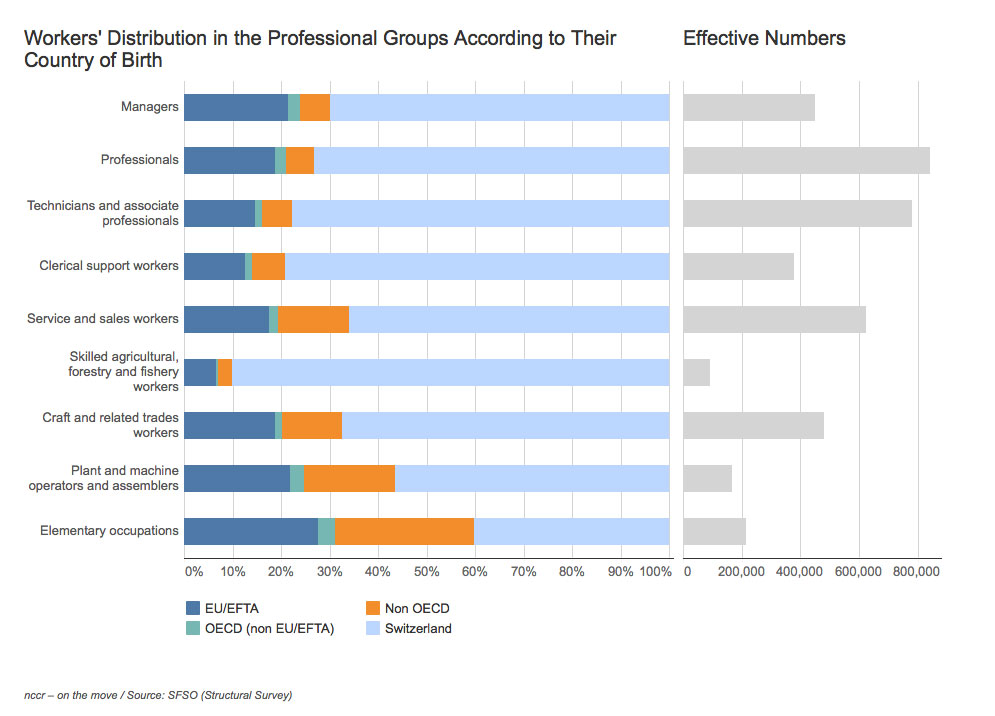Click on the image to access the interactive graphic.
The impact of migration on the labor market can be illustrated by examining the proportion of persons working in a given occupation who were born abroad.
For several occupational groups, the proportion of migrants is near or over 70%. Among them are cleaners and helpers as well as plasterers. These are followed by other manufacturing, construction and low-skilled service occupations, which are therefore essentially dependent on migrants. Common occupations (more than 50,000 individuals) which show a high proportion of migrants include stationary plants and machines operators (62%) as well as cooks (59%).
At the other end of the spectrum, there are a number of occupations – agriculture, florists or early childhood education, elementary school teaching, and police force, just to mention the main examples – that have fewer than 15% migrant workers. Accordingly, mid-level occupations in the services sector and the public service are characterized by lower migrant participation.
Does migration improve the professional situation?
Are migrants using their professional skills?
–
Source: Swiss Federal Statistical Office, structural survey 2010–2014
Note on the methodology: These figures are based on the combined data from the structural surveys conducted from 2010 through 2014. The data is then weighted so as to be representative of the whole of the Swiss population. These figures show the proportion of the population who were born abroad, according to occupation as of the survey date.
Terms of use: The Migration-Mobility Indicators are made available free of charge for non-commercial use. We ask the users to acknowledge the source.
Suggested citation: nccr – on the move, Migration-Mobility Indicators. Neuchâtel: nccr – on the move, 2017.
For more information about the data sets used, please click here.
Last update: 20 June 2017


